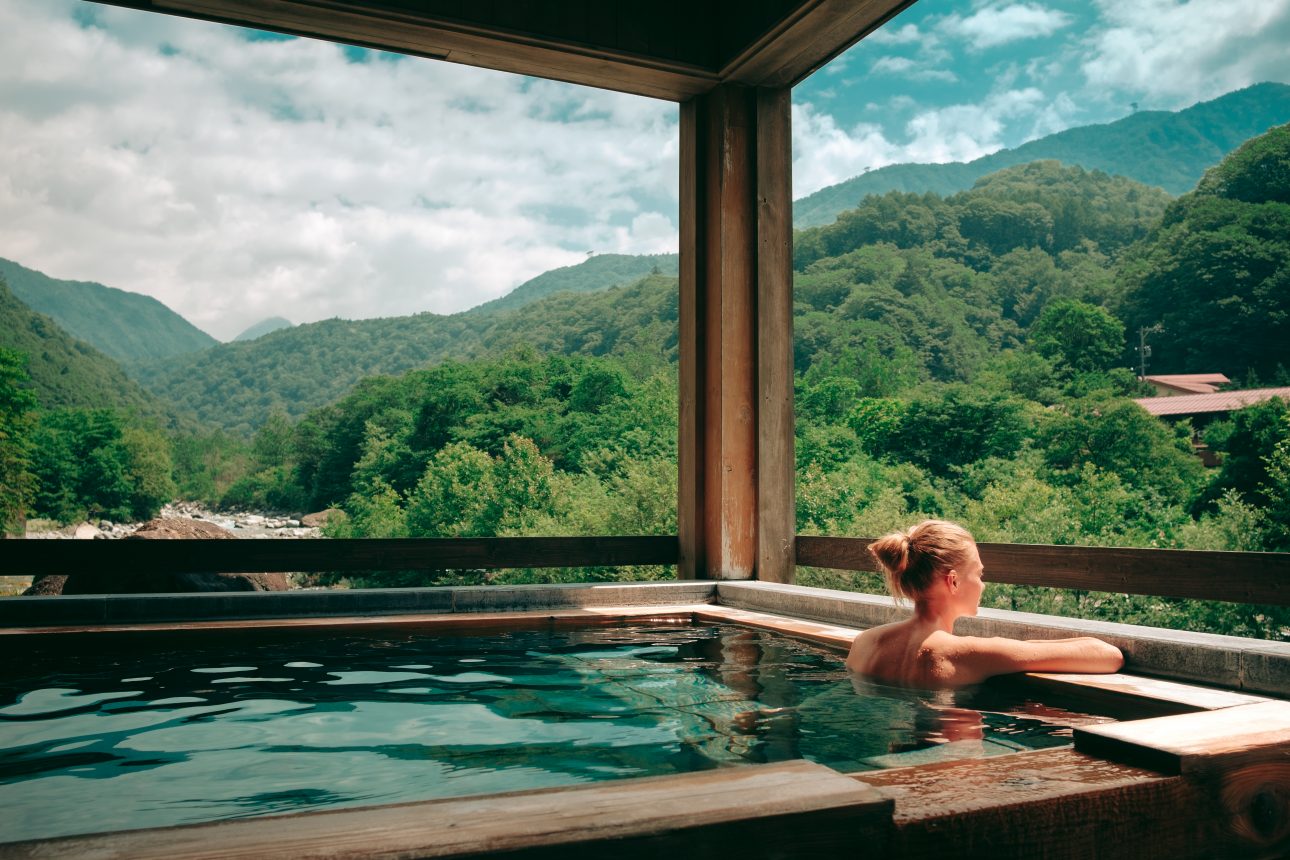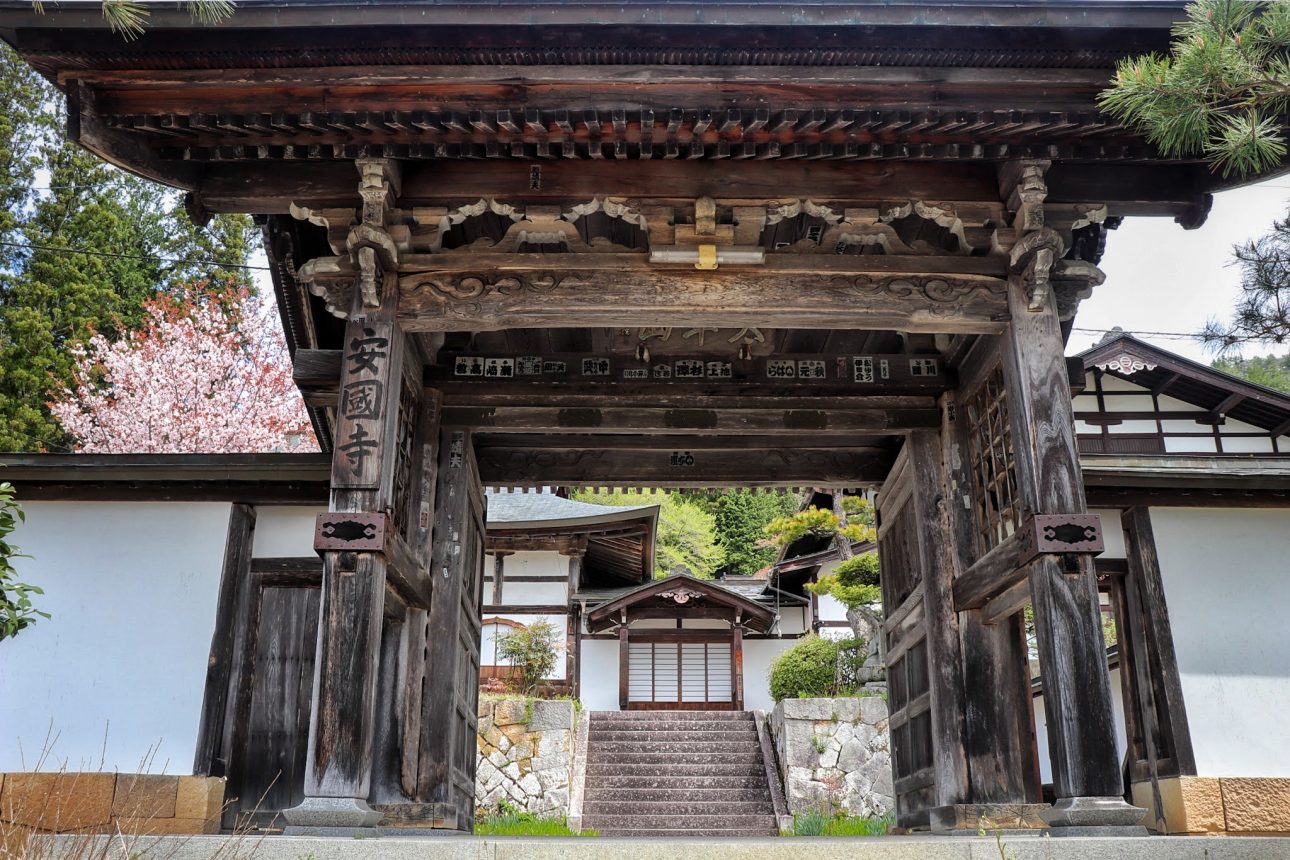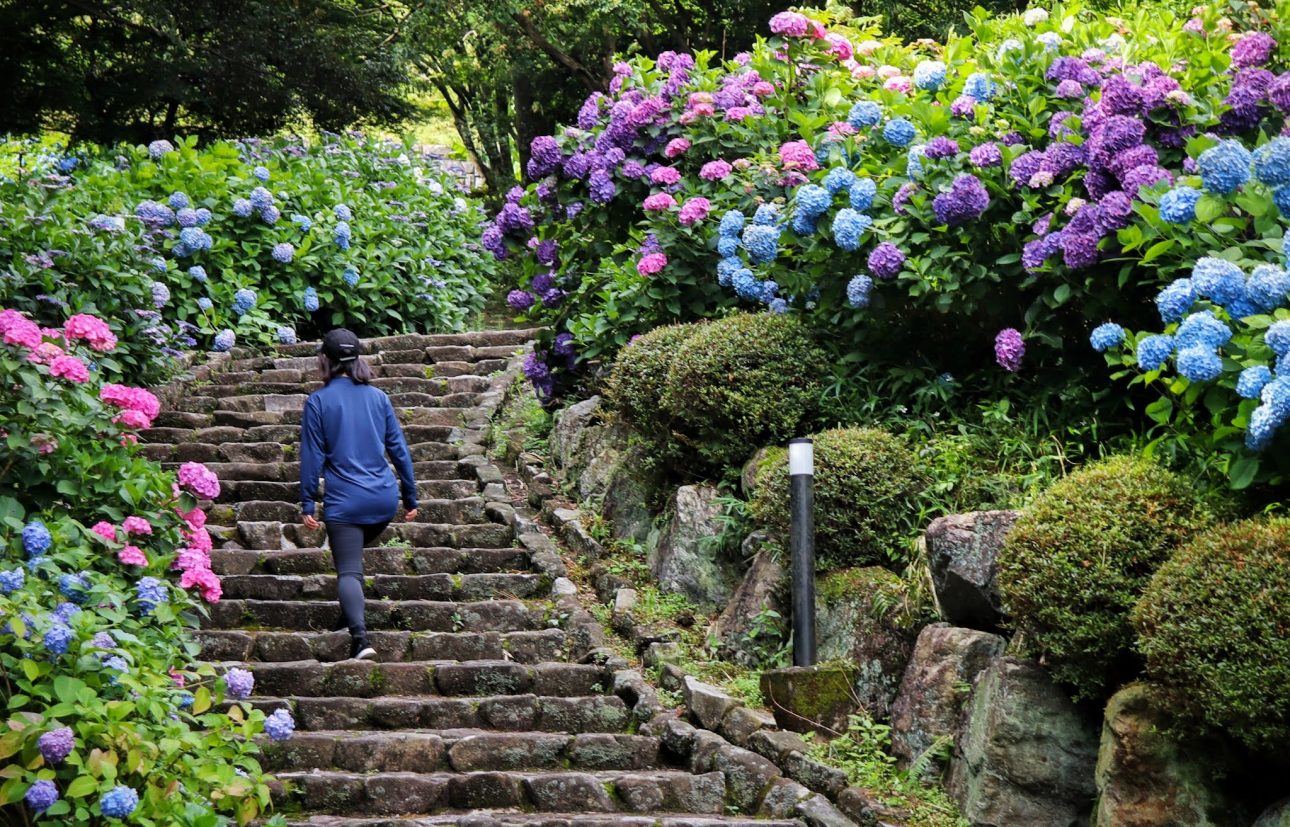Our guide “Kuma” shows us the ropes by filling our helmets with crystal-clear river water, then promptly pouring it over our heads. The cool waters feel perfect on a warm August day. Our group is decked out in canyoning gear as we take on a waterfall adventure at Hida-Osaka Falls in northern Gifu. This is the first stop along a multi-day trip through Gifu Prefecture and I am already feeling a sense of unity as we move toward our goal, a towering waterfall 1,000 meters up the river.
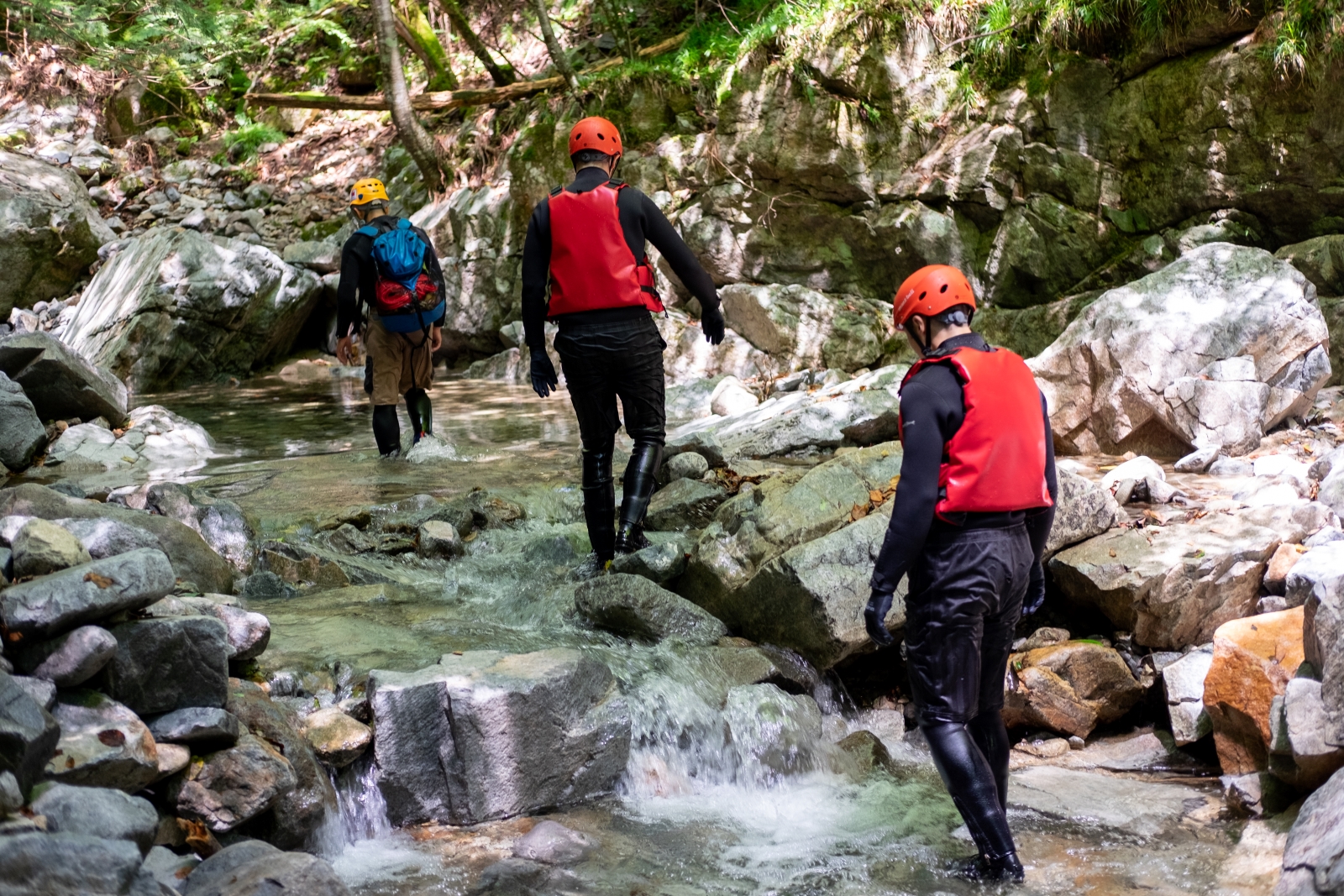
Visitors are instinctually drawn to Gifu activities and relaxation, embracing the natural adventures of Gifu Prefecture. Long treasured and protected by locals, the grand outdoors are a destination for all. An outdoor enthusiast will find challenges and thrills to satisfy the spirit. Climbing, trekking, swimming, and cycling are naturally a part of the appeal. Prefer some rest and relaxation? Lie outside under the starry skies, ride a ropeway that rises above a sea of clouds, or let forest therapy soothe the senses.
Adventure on your own, or take guided tours through rivers, mountains, and farmscapes. Regardless of your activities in Gifu during daytime, be sure to end it with a long soak in the mineral-rich, hot-spring baths of the Japanese Alps.
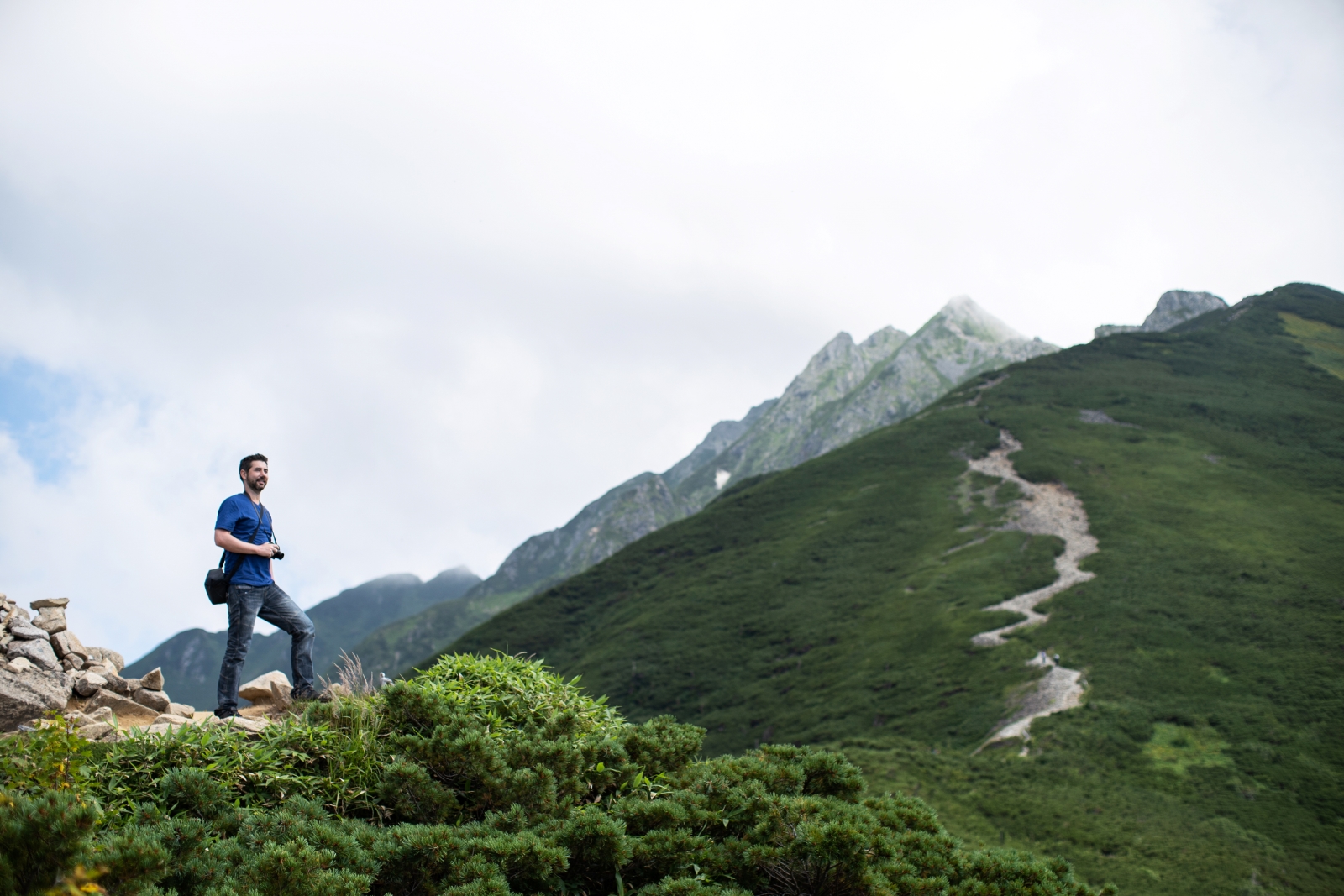
A path through rivers and waterfalls
Walking and wading through the river in the narrow gorge, I admire the beautifully sculpted walls of rock all around us, formed by Japan’s longest lava flow over 50,000 years ago. A frog stares me down and leaps into the river teasingly. With a sudden desire to do the same, I jump into a stream pool and slowly float towards a series of cascading falls ahead. Lying on my back with my gear keeping me afloat and the scattered sunlight beams shining through the trees above, I enjoy a moment of peace in solitude.
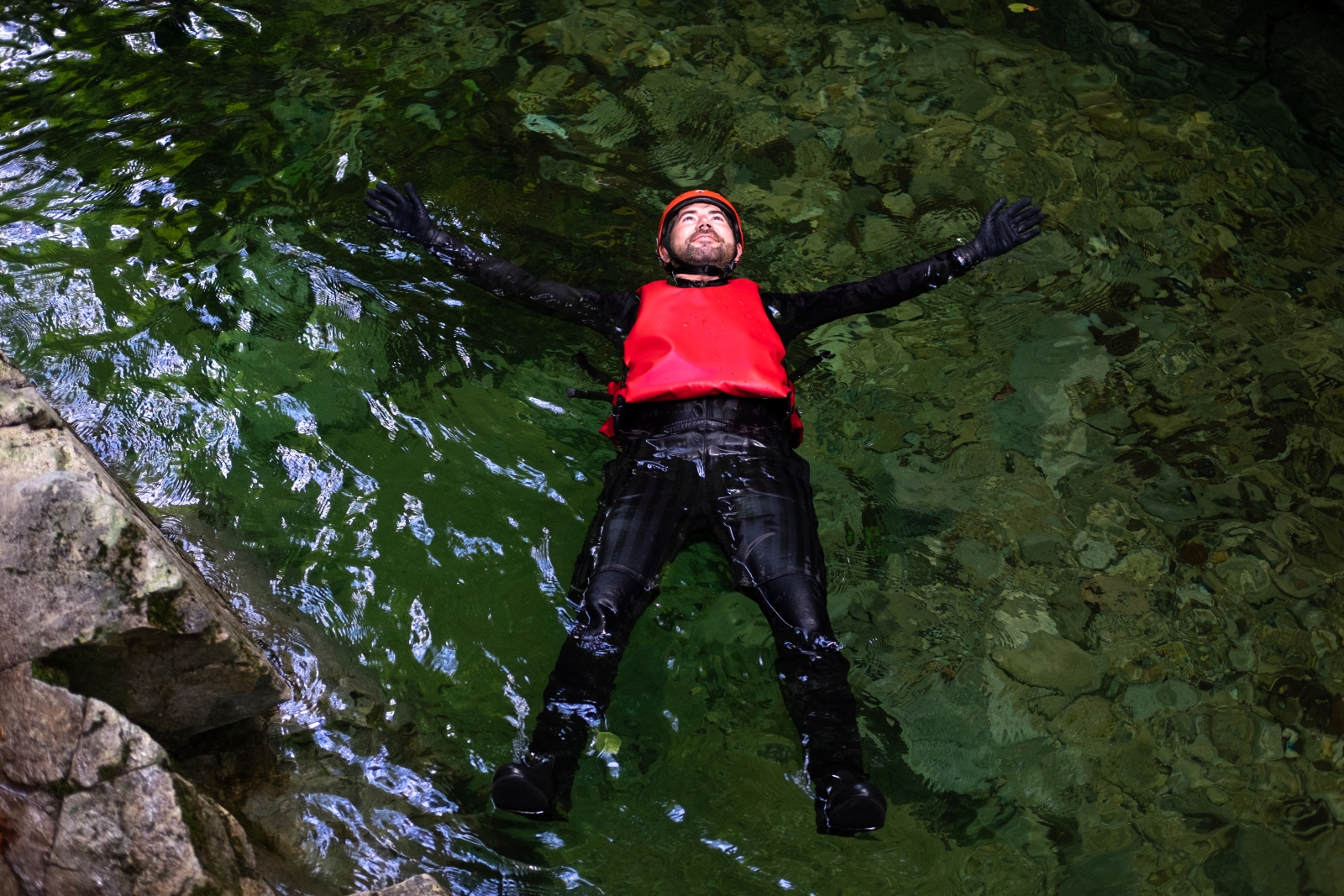
We prepare for another waterfall ascent. Our guides instruct us how to take the climb by carefully demonstrating each hold and placement for our hands and feet. Jun Kumazaki and Takanori Komeno are nicknamed “Kuma” and “Kome” – nicknames that mean bear and rice respectively. Kuma has taken this route over 1,000 times and knows every stone and crevice. Canyoning is enjoyed by people of all skill levels and it is easy to feel confident in our guides’ relaxed and fun-loving manners.

Kuma and the team at Hida-Osaka Falls also take an active role in the local ecotourism committee. “The main reason people visit this area of Japan is for the authentic natural experience,” Kuma explains. “The lands are kept pristine and preserved for future generations as each tour is individually approved.”
After about half an hour of our aquatic escapade we reach the pinnacle. A spectacular waterfall which greets us with resounding force and a soothing melody of water on rock. I stand just beneath the last and most impressive of the falls on our course and mentally mark off an item from my bucket list.
Let nature be your medicine
With our first adventure complete, we head deeper into Gifu Prefecture. Four-fifths of the land is covered in tranquil forests, secluded valleys, and towering mountains. In these untouched environments a careful protection of the land is woven into daily life and travelers reap the benefits of sustainability and preservation with every breath of fresh, crisp air that we take.
Our plan is to take it slow and rejuvenate the body and mind in the village of Hida Tanekura. Upon arriving in the valley we are greeted by the singing of birds and the sweet aromas of a lush natural environment. We make our way to Tanekura Inn, our lodging for the night.
Built over 100 years ago the Tanekura Inn consists of a traditional Japanese house with two storeys and three rooms as well as surrounding Itakura storage warehouses that have been converted into two-storey private cottages. We are greeted by Senda Yoko, our hostess, chef and innkeeper.
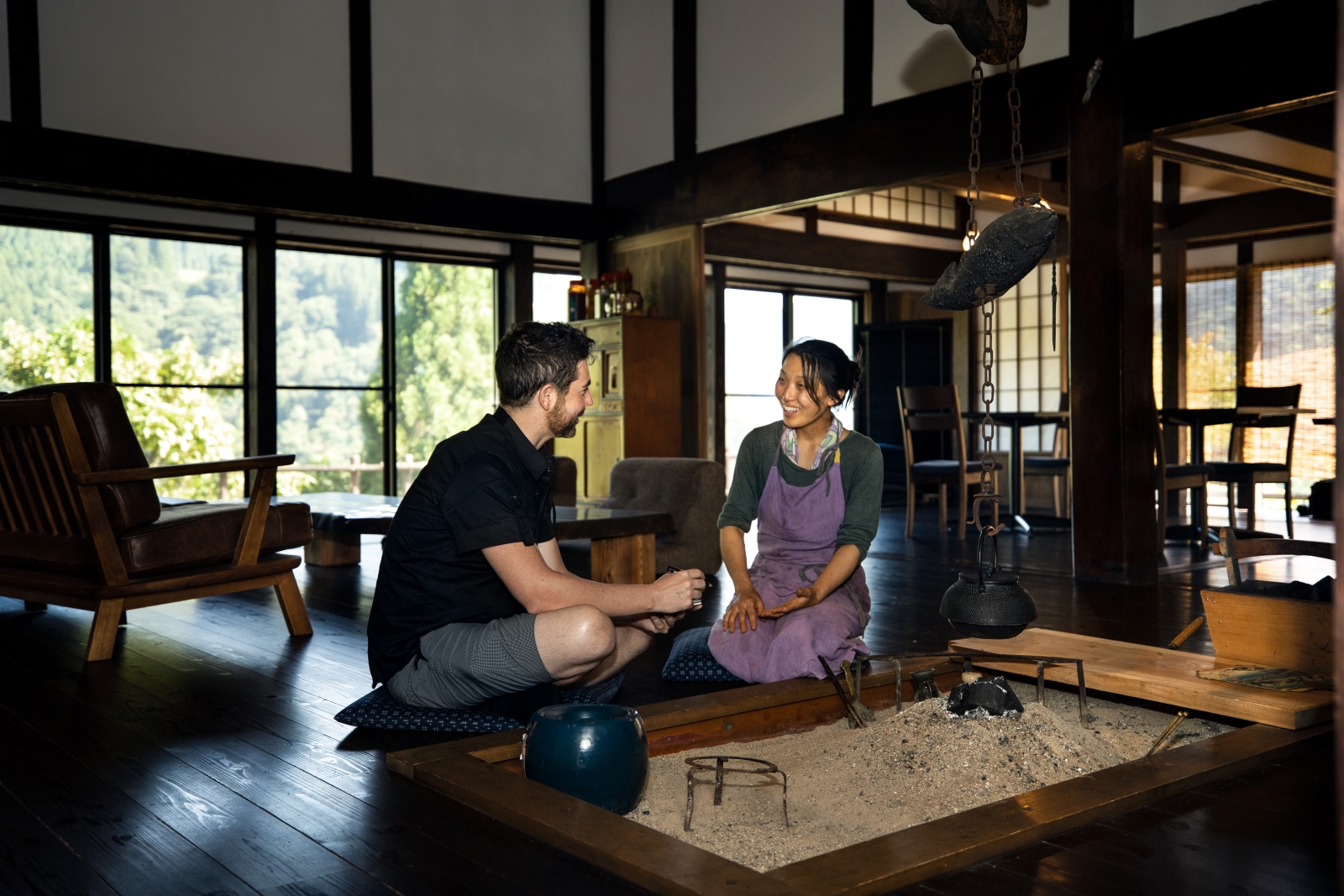
In the main house, dinner is served nearby the traditional irori fireplace in the common area. The courses served are vast and each dish is based on the ingredients grown in the surrounding valley. Yoko carefully arranges the presentation of food as if constructing a work of art, explaining the meaning and components of each creation in detail as we eat. “The concept behind the Tanekura Inn,” she explains, “is to provide a retreat for detoxification of body and spirit. We purify our bodies by taking in locally-harvested foods and ingredients that are gentle on the system. Each meal is carefully handcrafted using selected grains and vegetables from the community, then mixed with medicinal herbs that help with common problems such as indigestion and high blood pressure.”
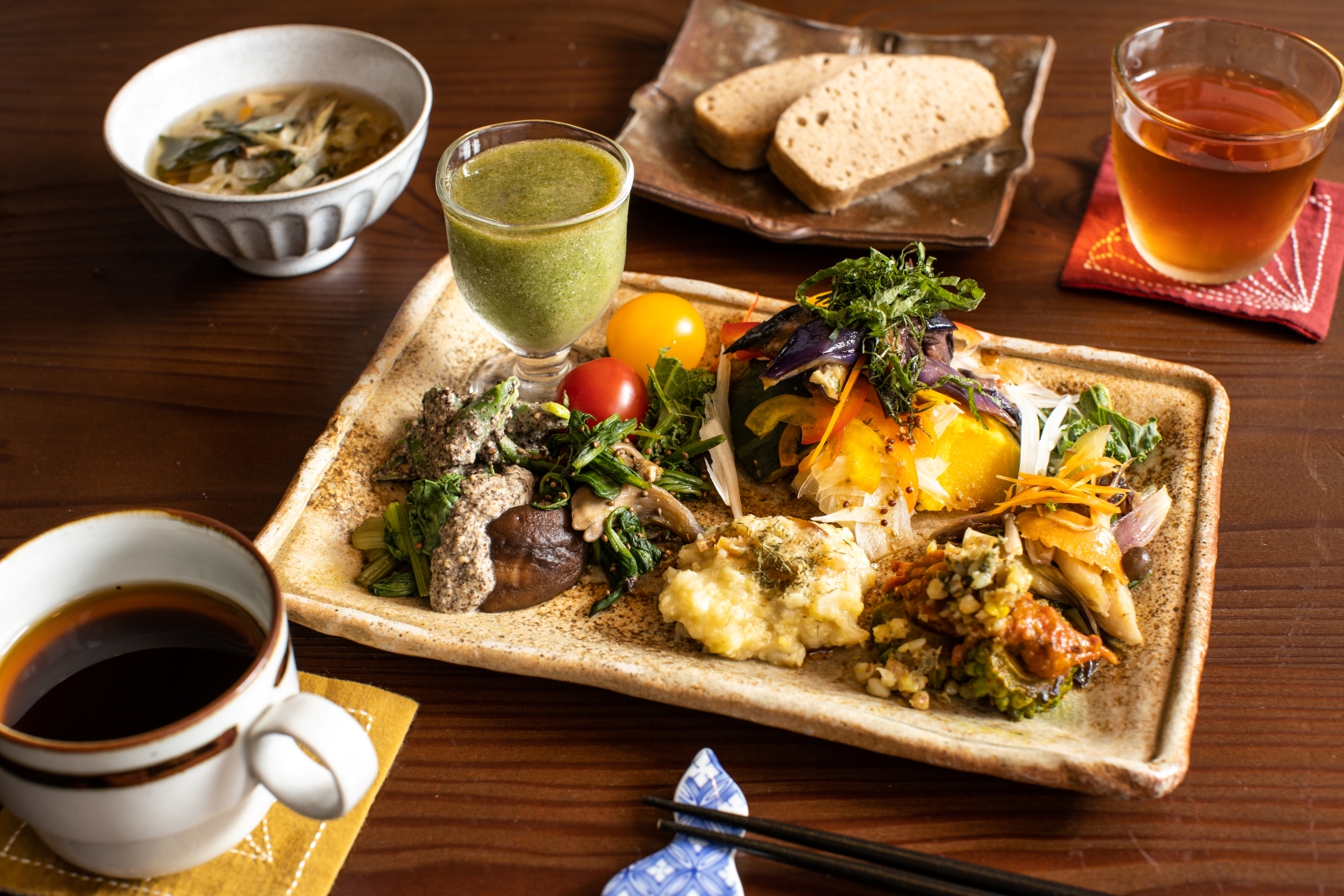
Well satiated from the feast, I make my way towards the hinoki (cypress) bath and am filled with the earthy scents of wood and floral aromas as I soak and drift into a state of pure relaxation. Our group takes turns in the bath as we quietly chat and enjoy ourselves with a few drinks in the common area. Once we have all taken our turn, our hostess returns and guides us outdoors in our yukata robes and geta sandals. We click-clack along the path in the blackness of night guided by her solitary lantern. As we separate ourselves a bit from the lodge, darkness fully envelops us as she dims the lanterns. We lay down on soft ground mats and wait a moment for our eyes to adjust. The elusive Milky Way shows itself in full splendor and I am astounded, once again, by the great outdoors.

The next morning, we eat breakfast and hear stories of the valley. Yoko recommends that we take a walk and interact with the locals. She reminds us of the importance of time spent “doing nothing” as a way to further detoxify our spirit. I find a new measure of tranquility as I walk the rice paddies, listening to the sounds of bird calls and cricket chirps. Nearby a man takes a break from his work and offers a friendly wave before he returns his attention back to the fields. Less than 20 people live in the valley, but they are accustomed to the occasional visitor. My path takes me up the hillside and I look over the village. A dozen wooden houses nestled deep in a forested valley surrounded by the Japan Alps creates a remarkably picturesque setting.

They call these sorts of mountain villages and communities the untouched lands as they remain relatively unaffected by time. The philosophies of satoyama, a way of living and coexisting with nature remain strong. There is dedication to the protection and preservation of the countryside that goes above and beyond what we see from most sustainable development goals. The Japanese people have long coexisted with nature in their everyday lives, and in Gifu, that way of living and respecting untouched nature is strong. Some of the locals have lived here their entire lives, but many find the lifestyle here so appealing that they make it their home. As we depart the valley, we plan to further learn the meaning and philosophies through another satoyama experience but I am getting a clear picture already.

the future of the village
A rural trip shows satoyama living in action
Our group moves on to Hida-Furukawa, an undiscovered treasure of a town. Although the population density increases, we recognize the distinct culture and beauty of a rural town that has been highly isolated from cities and surrounding influence for hundreds of years. The calm streets here are unspoiled by tourists and traffic, a village seemingly lost in the mountains. True to satoyama the area strongly supports and depends on nature and the surrounding farmlands to provide all they need for daily life.
Our goal is to take a closer look at satoyama living by renting a few bicycles and experiencing the Japanese countryside with the wind in our face. As we walk to our next Gifu activity, located on the main street of downtown Hida-Furukawa, we take in the surrounding architecture. The layout and architecture of the traditional buildings lining the street and canal district were carefully planned by master builders using local timber.
Tours are provided year-round by Taku Yamada, SATOYAMA EXPERIENCE founder and CEO, and his team of multilingual guides, surprising to find in an area so deep in the heartland of Japan. He explains that in order to understand satoyama we need to explore the countryside and see locals living in harmony with the nature around them. “As you explore the countryside and view the homes and farms of Hida-Furukawa, we ask you to look deeper and see the natural cycle and coexistence of human and nature,” Taku explains.

Our guide today, Sho, helps us with our bicycles and offers a short guidance and training session. We fill up our waters and depart in a single line from the town. We are treated with an unforgettable experience over the course of the next several hours.
As we ride, several experiences keep the satoyama image in our minds. We take a break in front of a traditional home and refill our bottles from the free-flowing springs. The waters flow year-round and are maintained by individuals, but open to anyone in need of a drink. We pass fields with fully grown rice demonstrating the rich green colors of summer. The people working and living their lives in these fields often look up and wave as our group of bicycles rides along the narrow dirt roads. We pass a small school where children playing and working in small gardens happily greet our group. Later we see the children safely walking home from school unattended. We stop for lunch and enjoy a noodle dish in the local style paired with fresh valley ingredients and then browse the produce of a nearby farmers market.
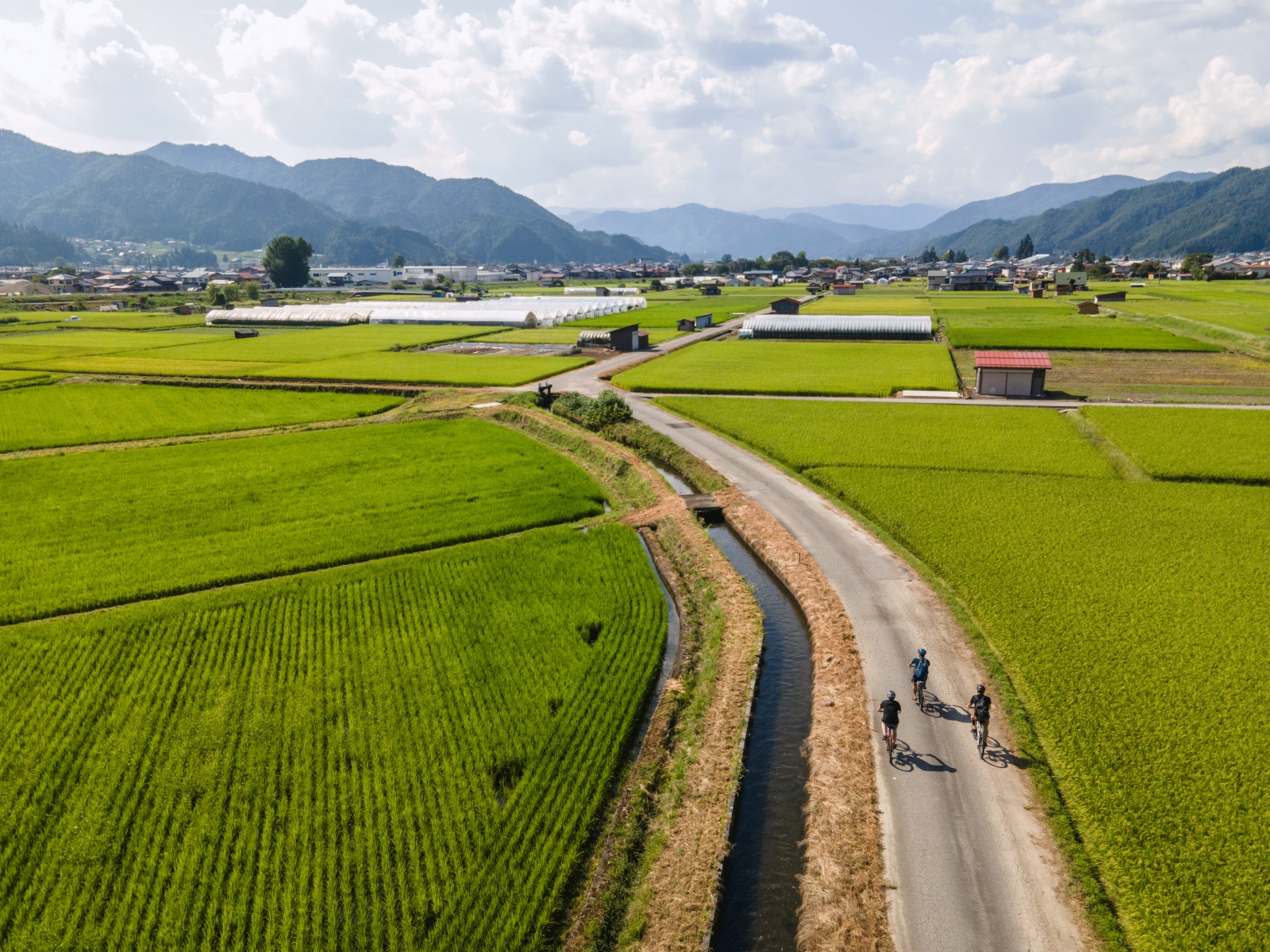
One of our last stops is a favorite of Taku’s, a small temple tucked into the forest. He explains to us that the temple is not all that impressive if you compare it to the grand temples of Tokyo and Kyoto, but it serves as a point of connection for the entire valley and has a deep meaning for all who visit and pay their respects. We pay respects as well and return back to town with a fresh spirit and positive outlook.
“This is not a tourist attraction that fixates on a single sightseeing destination,” says Taku. “Instead, we offer a window into Japanese rural life. Our hope is to provide deep and meaningful experiences that encourage interaction, questions, and the chance to see sustainability in action.” The experience of seeing people naturally live their lives certainly has a profound impact on those who visit. I hope to learn from my own time here and work harder at maintaining and protecting my own local environment.
Everything is better in the mountains
We move next from the valleys and into the mountains for a journey into the clouds. Gifu is home to five of Japan’s ten tallest mountains, each towering above 3,000 meters in height. Thanks to roads and ropeways, however, there is no need to climb from the base to take in the views unless we feel so inspired.

The Shinhotaka Ropeway is an impressive feat of aerial engineering newly renovated in 2020. The ropeway is Japan’s only lift with double-decker cabins, each with full 360 degree views of the surroundings. Near the top at around 2,200 meters visitors can take in the full expanse of the Northern Japan Alps including the namesake Mount Hotaka, Japan’s third tallest mountain. The summer views are filled with wildflowers and alpine plants while fall transforms the mountainsides into fiery shades and winter creates a dreamy wonderland of spectacular beauty. At the top, there is an observation deck which provides both splendid scenery and a starting point for high-elevation mountain hikes.
Our group took a standard course which provided a leisurely walk about an hour into the mountains. The crisp air and soft dirt paths weave throughout the deep forest. Soft sounds of a light breeze playing with the leaves fills our heads. The path is well-shaded to protect us from the summer sun and offers the occasional viewpoint that would make a mountain monk proud.
For those looking to hike and trek there are options and hiking trails aplenty. We passed a guesthouse where adventurers can stay and eat overnight in the mountains for complete immersion into nature. Our own stay was back down the mountain in a beautiful ryokan, complete with an outdoor hot spring to soothe the muscles, the perfect ending to an active trip.
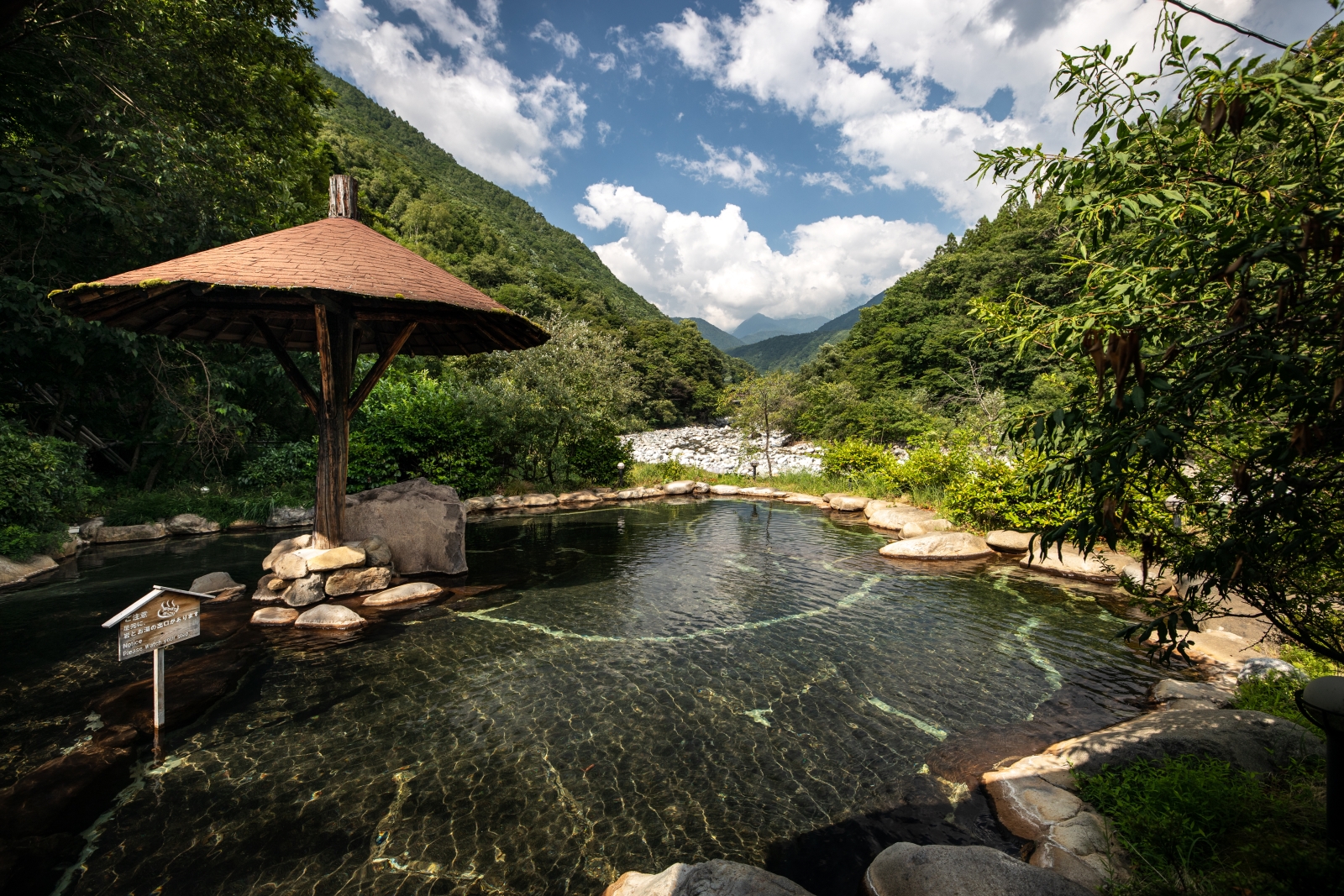
My trip took me deep into Gifu Prefecture and opened my eyes to the natural side of Japan. City life does not offer much perspective into sustainability, so a few days with the communities in Hida was enlightening. The dedication to preserving this satoyama way of life in the modern era is both inspirational and a unique draw that will entice any traveler seeking a timeless Japanese trip.
















